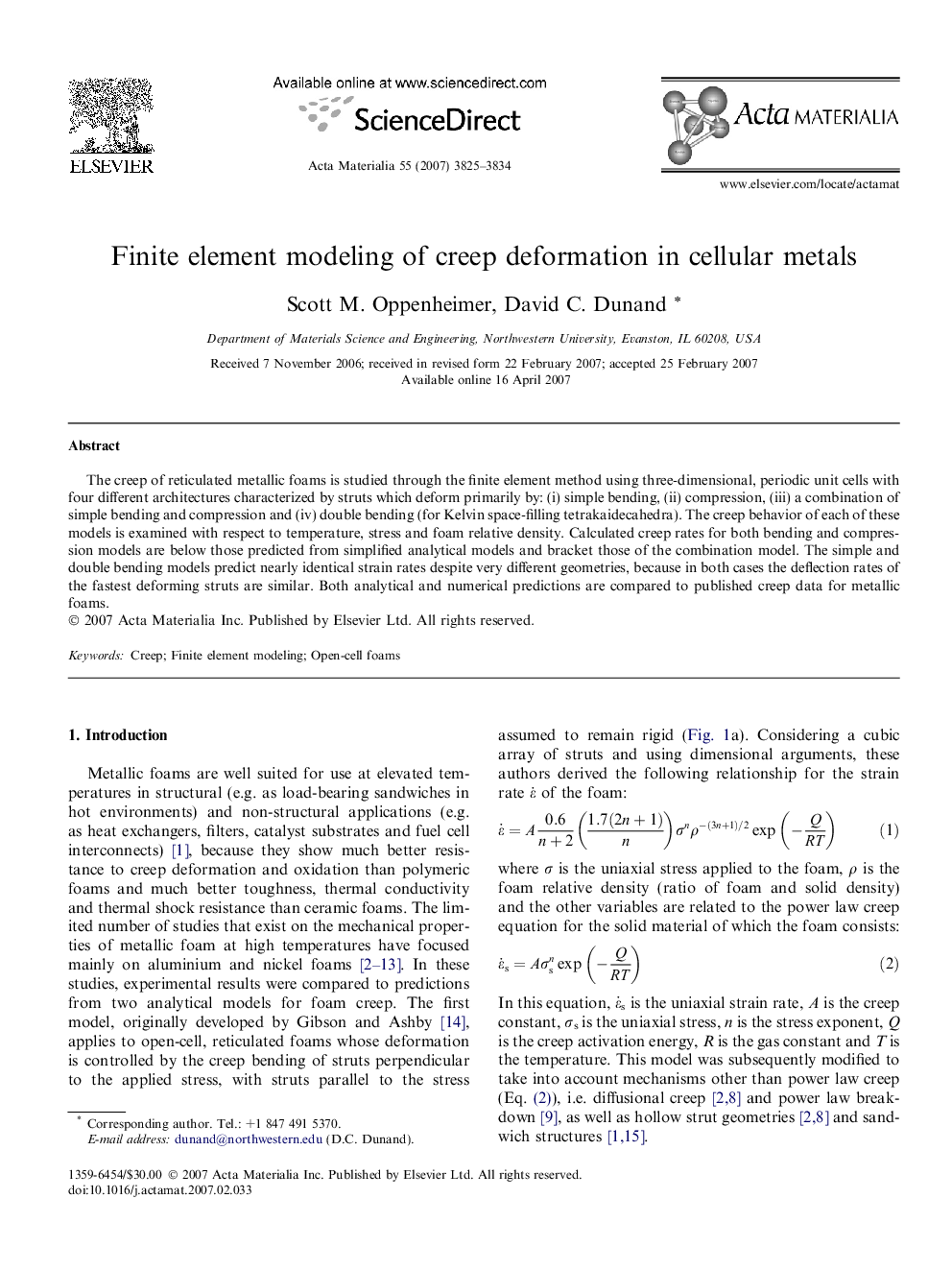| Article ID | Journal | Published Year | Pages | File Type |
|---|---|---|---|---|
| 1449579 | Acta Materialia | 2007 | 10 Pages |
The creep of reticulated metallic foams is studied through the finite element method using three-dimensional, periodic unit cells with four different architectures characterized by struts which deform primarily by: (i) simple bending, (ii) compression, (iii) a combination of simple bending and compression and (iv) double bending (for Kelvin space-filling tetrakaidecahedra). The creep behavior of each of these models is examined with respect to temperature, stress and foam relative density. Calculated creep rates for both bending and compression models are below those predicted from simplified analytical models and bracket those of the combination model. The simple and double bending models predict nearly identical strain rates despite very different geometries, because in both cases the deflection rates of the fastest deforming struts are similar. Both analytical and numerical predictions are compared to published creep data for metallic foams.
